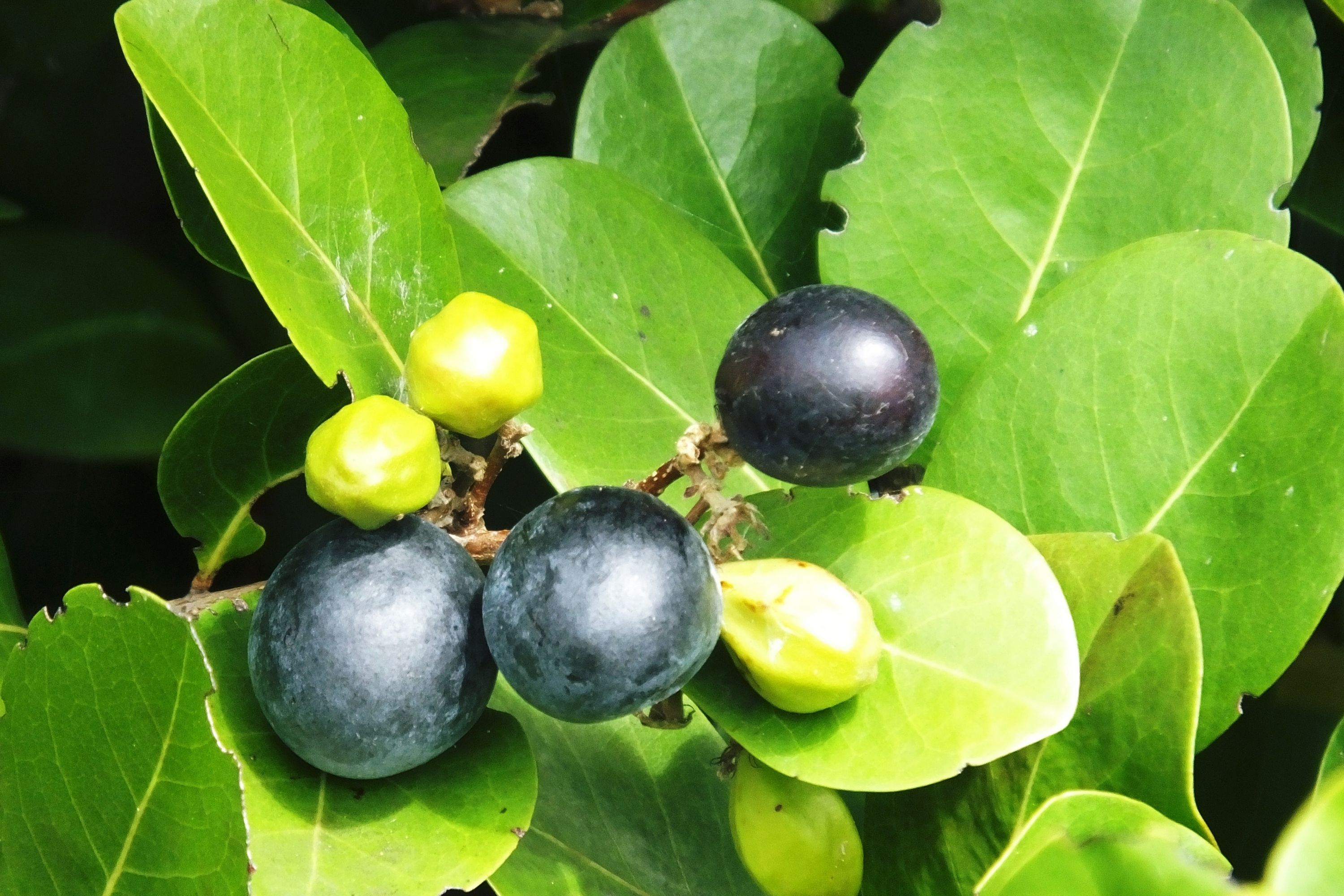Coco plum
(Chrysobalanus icaco)

Description
Chrysobalanus icaco, the cocoplum, paradise plum, abajeru or icaco, is a low shrub or bushy tree found near sea beaches and inland throughout tropical Africa, tropical Americas and the Caribbean, and in southern Florida and the Bahamas. An evergreen, it is also found as an exotic species on other tropical islands, where it has become a problematic invasive. Although taxonomists disagree on whether Chrysobalanus icaco has multiple subspecies or varieties, it is recognized as having two ecotypes, described as an inland, much less salt-tolerant, and more upright C. icaco var. pellocarpus and a coastal C. icaco var. icaco. Both the ripe fruit of C. icaco, and the seed inside the ridged shell it contains, are considered edible. Chrysobalanus icaco is a shrub 1–3 metres (3.3–9.8 ft), or bushy tree 2–6 metres (6.6–19.7 ft), rarely to 10 metres (33 ft). It has evergreen broad-oval to nearly round somewhat leathery leaves (3 to 10 cm long and 2.5 to 7 cm wide). Leaf colors range from green to light red. The bark is greyish or reddish brown, with white specks. The clustered flowers are small, greenish-white, and appear intermittently throughout the year but more abundantly in late spring. The fruit that follows (a drupe) is variable, with that of the coastal form being round, up to 5 cm in diameter, white, pale-yellow with a rose blush or dark-purple in color, while that of the inland form is oval, up to 2.5 cm long, and dark-purple. The fruit is edible, with an almost tasteless to mildly sweet flavor, and is sometimes used for jam. It contains a five- or six-ridged brown stone with an edible white seed. The common name for this fruit in Barbados, Trinidad and Tobago and Guyana is "fat pork". The seed's kernel is used ground into a powder and dried, as a spice (variously called gbafilo, itsekiri, umilo,emilo or omilo) as part of West African Pepper Soup Mix.
Taxonomic tree:







